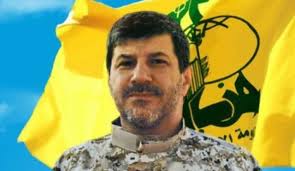Martyr Hassan Lakkis did not change his car in the recent period.
 The question of those who participate in the investigation of the assassination crime that targeted Hezbollah leader Hassan Lakkis last week has turned from: "Did the Israeli Mossad, logistically, shoot at Lakkis?" into: "Why the Israelis decided to assassinate a target by shooting?", a well informed source told Assafir daily newspaper Tuesday.
The question of those who participate in the investigation of the assassination crime that targeted Hezbollah leader Hassan Lakkis last week has turned from: "Did the Israeli Mossad, logistically, shoot at Lakkis?" into: "Why the Israelis decided to assassinate a target by shooting?", a well informed source told Assafir daily newspaper Tuesday.
Sources familiar with the progress of investigations asserted that «Mossad» took over the operation by setting the goal, planning, supervising and implementation on ground, while it has been circulated previously that the Zionist intelligence service hired a local third party to secure logistics, while keeping the role of information for its own members.
Investigators are now certain that the shooters are two persons, yet investigations focus on discovering the number of participants in the survey and transportation and their identities.
According to Assafir, investigations were able to determine the route walked by perpetrators: In the beginning, it has been believed they went through St. Therese Street due to its proximity to the building in which Lakkis was dwelling, but the current data suggests that they stepped from a car parked at Bolivar Camille Chamoun.
Investigators are also working on content of surveillance cameras installed at the Bolivar and the surrounding region, in addition to the communication data:
"After that, we can reach a serious filament regarding the path taken by those involved before and after the assassination," a source told Assafir.
No one in the local security services could discover so far the main reason behind using bullets in the assassination. Some believe that it was a message carrying various security hints, and some others refuse to speculate, waiting to find out the reason after concluding the investigations.
Investigators say that Lakkis assassination seemed professional at the field level. However, reconnaissance was not a difficult mission. Mossad has benefited from a major gap providing that Lakkis had stayed in his second house in Hadat neighborhood for not less than three years. Thus, whom who wants to assassinate him must first determine the easiest target.
Investigators say that Israelis use "cluster networks" in terms of collaboration with agents, i.e. they can entrust more than one spy, not a one of those spies knows that another one else is doing the job itself. Sources told Assafir that Lakkis did not change his four-wheel car for more than a year, knowing that he had to resort to taxis at certain times, just like the leader martyr Hajj Imad Mughniyeh.
In addition to that, another question emerges: How the Israelis dare to risk and carry out a similar operation logistically? It seems unlikely to some officers that 'Israel' has committed the murder even though they confess it was 'professional', yet some of those participating in the investigation say "the revealed data confirms that 'Israel' is guilty, and investigation on data of traveling to and from Lebanon during certain days - whether by sea or by air - is underway as well."
Some veteran officers recalled previous assassinations and agents recruiting operations, which revealed that the Israelis can get in and out of Lebanon "in an unbelievable easiness," arguing that the agent Nasser Nader admitted his infiltration from Lebanon to Occupied Palestine around 17 times in order to meet his Israeli operators before and after the assassination of Hezbollah leader Ghaleb Awali.
According to well informed officers, checking the identities of the people sent by Mossad to Lebanon earlier in the year and after the May 2000 liberation reveals that most of them are not Israelis, but they are holding several nationalities, and that 'Israel' can "disown them once the mission doomed to failure."
However, it is not secret that agents who are used for carrying out several missions, most notably of reconnaissance nature, are Lebanese since more than ten years.
Translated by Al-Manar English Website Staff
